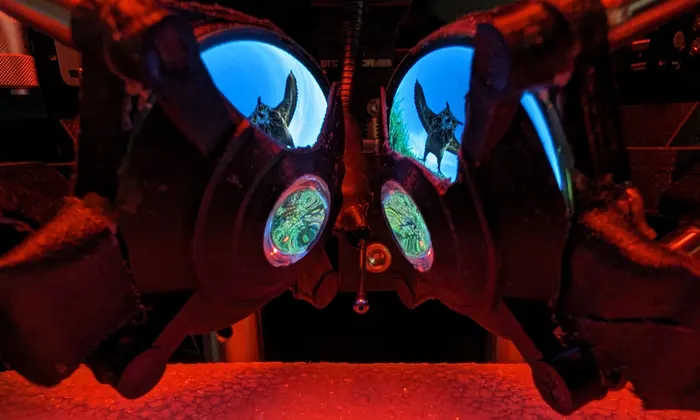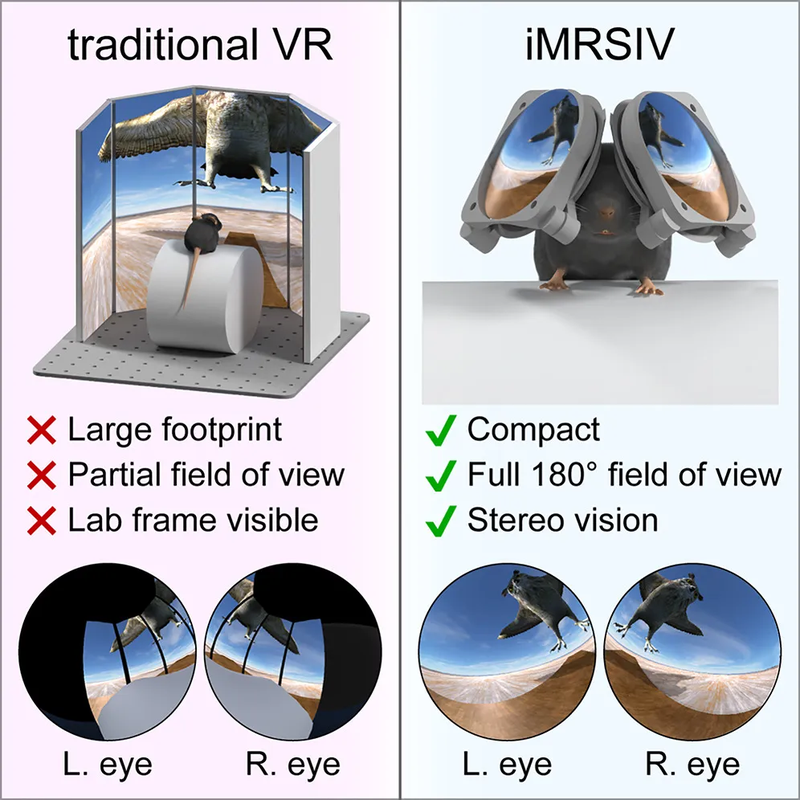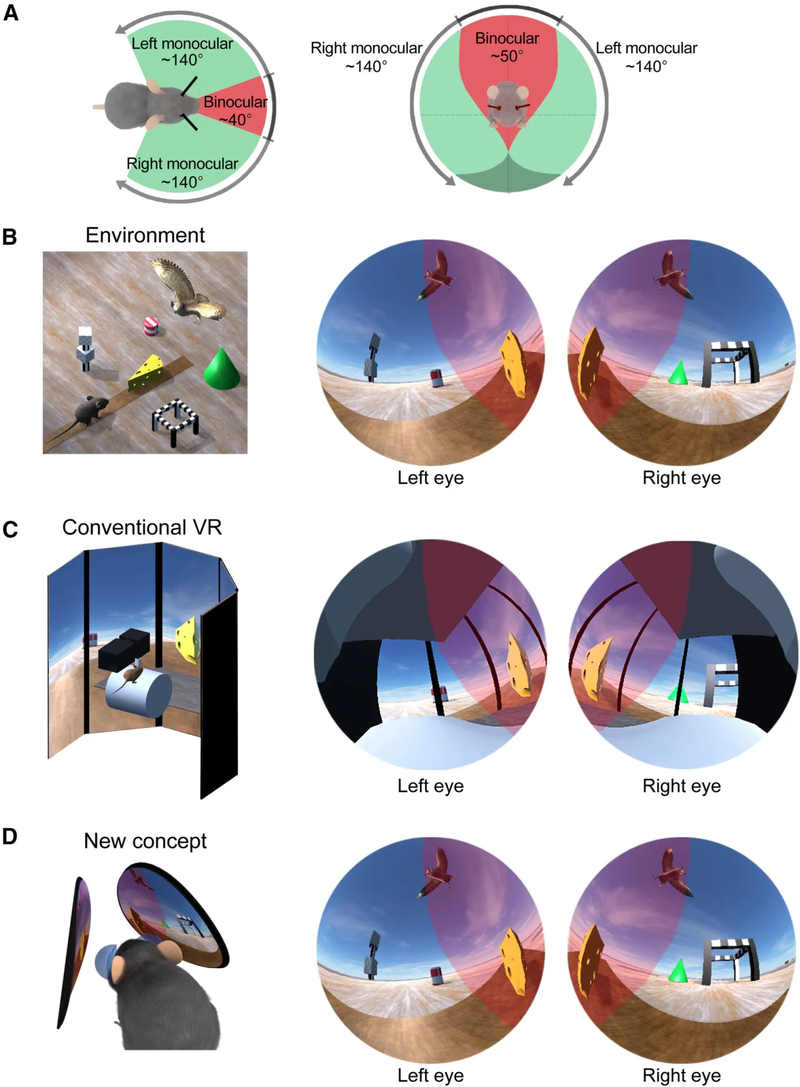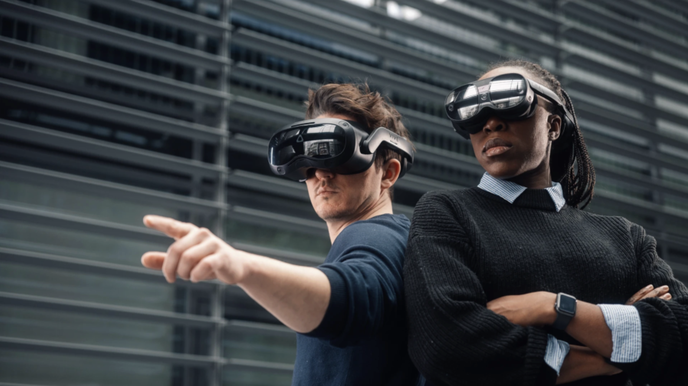Mice are probably the most commonly used animals for experiments by humans (sigh). There are two main reasons for this: first, mice have similar genetic and physiological structures to humans, and second, they are easy to breed and have a signifantly short life cycle, which can enable researchers to study any changes or even mutations across several generations of mice in a controlled environment in a very short period of time. The famous (or, infamous) "Universe No. 25" experiment is a prime example for why mice are prime candidates for such research experimentation. However, what we are going to talk about today is not so cruel-- a research team led by Professor Daniel Dombeck from Northwestern University in Illinois has developed an immersive VR system specifically for mice, opening up new exciting avenues for future neuroscience research related to the brain.

When faced with bird predators, mice wearing VR goggles are also scared. (Source: The Guardian)
In fact, it is not new to let mice play in VR. We have previously introduced a VR maze for mice to run in. Scientists have found that VR mazes can enhance theta waves in mice brains and this potentially has strong implications for VR being a powerful tool for treating Alzheimer's disease in humans. However, the research published in the journal "Neuron" this time is a VR system called iMRSIV, which is remarkable for its wide field of view (FoV).
The paper describes traditional VR setups for mice, where they are positioned on a treadmill in front of a large screen to move and interact with the virtual environment. However, the difficulty lies in the fact that mice have a a naturally wider FoV with their vision and can actually perceive the surrounding equipment in the laboratory, which greatly reduces their VR immersion. “We can have them run through virtual mazes, imaging their brains to see which neurons are forming memories and remembering where they are,” says Dombeck. “[But] it’s a flat thing that the animal is looking at and there’s no depth perception, and the mice can see stuff that isn’t part of the projection. So there’s all these cue conflicts that are around and they’re not, we think, fully engaged and immersed in the environment. They’re not fully tricked.”
 (Source: Paper)
(Source: Paper)
So how can we make mice fully immersed and unable to distinguish between reality and virtuality, like in "The Matrix"? First of all, mice have a horizontal and vertical FoV of about 140 degrees in each eye, and the overlapping area of the two eyes is about 40 degrees, which requires this VR system to provide a horizontal FoV of at least 240 degrees and a vertical FoV of 200 degrees to be immersive enough. Therefore, the iMRSIV VR system designed by the research team provides mice with a wide field of view of 180 degrees in each eye, allowing mice to fully live in the virtual world.
Professor Dombeck further pointed out that the new VR goggles system not only eliminates visual clues in the laboratory but also presents virtual predators at the top of the mice's visual field, allowing researchers to observe their reactions. In the wild, when mice are avoiding bird attacks, their instinctive reaction is to freeze or run away, and the experiments show that mice's reactions in the VR system are the same as in the real environment. The more immersive iMRSIV VR system provides us with more possibilities to understand how the brain works and its implications for neuroscience.

Although the size of this VR system for mice has been greatly miniaturized compared to previous iterations, it is still too big for mice. “Our prototype goggle system described in this paper is a bit too large to be carried around by mice, but we plan to make smaller versions in the future that mice could carry around like a headset,” Dombeck said. Do you envy mice for being able to use such advanced VR glasses with such a wide FoV? Don't be jealous, the research team only provides their mice with a super low-resolution of 400 × 400 in OLED displays. This is all a mouse would need, because their eyes cannot perceive as much detail as human eyes can.


 (Source: Paper)
(Source: Paper)

